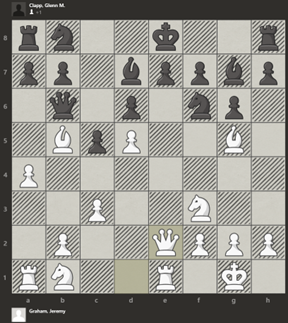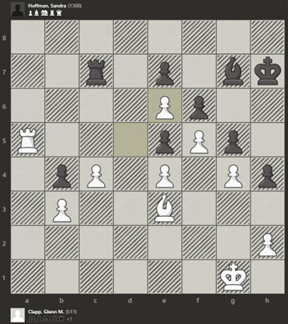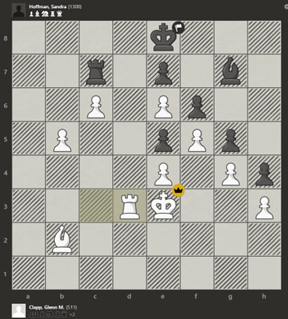Who's winning?
How to look at a chess board and in a few minutes, get an understanding of who is winning the game
Most people know that the goal of chess is to trap your opponent’s king such that it is in danger of capture and your opponent has no legal moves which would save it. However, before that eventuality, it can be hard to say who is winning a game in progress. There is also the additional difficulty of deciding what one should do on one’s turn if checkmating the opponent’s king is not an immediate possibility. To help answer both of these questions, I propose the following criteria for determining who is winning a game and why, and to come up with plans to improve your position. These criteria are king safety, space, and material.
King Safety
Paramount among the criteria for who is winning is king safety. One side of the board can have all of the advantages in the world, but if their king is not safe, they will still lose the game. When evaluating your game, the first thing you should consider is whether or not your king is safe. When evaluating your king’s safety, you’re looking for open diagonals, ranks and files where your opponent can attack your king, whether you king is still in the middle of the board (usually bad) or castled (usually good). Finally, evaluate whether there are any key captures or checks that your opponent could play that will put your king in danger.
Castle early, castle often
Your king is vulnerable in the center of the board. It is better placed behind a protective rank of pawns off to the side of the board. The most efficient way to achieve this is to move your king two spaces rather than its usual one space, and to put the rook on the other side of the king. This maneuver is called “castling.”
Since moving your king or rooks makes it illegal to castle, such moves are not advisable in the opening with a few uncommon exceptions. Further, because it is illegal to castle when your king is in check or when the squares through which your king must travel are attacked, waiting to castle can be disastrous as your opponent can simultaneously attack your king and make it difficult or illegal for him to escape. Castling after move 10 or so is considered late, and many openings are designed specifically to usher the king to safety by move 4 or 5. Your goal in every game should be to castle as soon as you can.
Below is a game I played against fellow club member Jeremy Graham. I lost this game, and the primary reason was because I delayed castling until it was much too late; and Jeremy’s attack is made possible by the fact that he castled early and got his king side rook to the center of the board and behind his queen creating a battery.
Space
Consider the game below that I played in the 123rd Annual U.S. Open Chess Championship against Sandra Hoffman. Count the material, who’s ahead? Consider king safety, who’s king is safer? Finally, consider the situation concerning space. In particular, I want you to consider black’s bishop and its future; where can that bishop go? How long would it take black’s king to get to the center of the board and influence the game?
White is absolutely dominating this position. The computer’s evaluation here is +5.2! White can coordinate the rook and bishop on the b pawn, and take it even if black defends with the rook they’ll be forced to sacrifice the rook and then the connected passed pawns on the b and c file will be promoted and black can do nothing.
The figure above shows a few moves later after white brought the king in to keep black’s rooks in front of the pawns, captured the black pawn on the b-file, and permanently sealed black’s king away by claiming the d file with the rook. At this point black resigned. You’ll notice that the bishop is still trapped in the corner.




